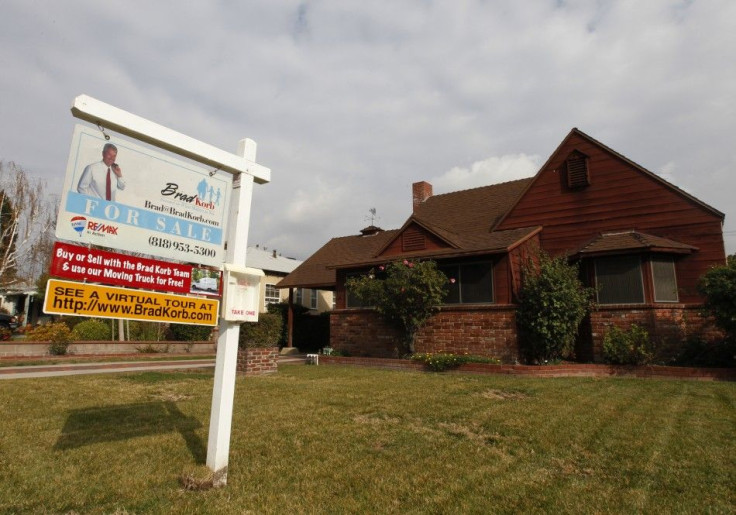US Homeownership Rate Drops To 15-Year Low

(Reuters) - The share of privately-owned U.S. homes fell to a 15-year low in the first quarter as falling house prices and stringent lending conditions push younger Americans, in particular, into renting.
The homeownership rate slipped to 65.4 percent, the lowest since the first quarter of 1997, the Commerce Department said on Monday, with the rate for Americans under the age of 35 dropping to an 18-year low.
You are seeing the perfect storm of age, financing and the business cycle coming together to push down the homeownership rate, said Steve Blitz, chief economist at ITG Investment Research in New York.
The homeownership rate, which was measured at 66.0 percent in the fourth quarter of 2011, peaked at 69.4 percent in 2004 at the height of a housing market boom fueled by cheap credit.
The collapse of the U.S. housing market bubble triggered the 2007-09 recession. With house values tanking, many - especially the younger generation - are rethinking the so-called American dream of owning a home.
House prices have dropped about 32 percent from their peak at the end of 2005, leaving millions of Americans with properties worth far less than their mortgages and forcing many others into renting.
In the first quarter, the median asking sales price for vacant homes on the market was $133,700, the lowest since the first quarter of 2005, the Commerce Department said. That compared with $133,800 in the fourth quarter.
The homeownership rate for those aged 35 and under fell to 36.8 percent in the first quarter, the lowest since 1994.
This group was seen as the hardest hit by the recession, driving many into their parents' basements or to share lodging with friends and relatives.
Although young people are starting to find employment as the economy gradually improves, many either just do not have the savings to put down a deposit for a home or feel too insecure in their jobs to make such a financial commitment.
NO MONEY FOR DEPOSIT
They are not financially able to purchase a home and many are just coming into their first job and just don't have the savings and job security to be homeowners, said Celia Chen, a senior director at Moody's Analytics in West Chester, Pennsylvania.
Home buyers are required to put down as much as 20 percent of the asking price, a challenge given the 8.2 percent unemployment rate.
By contrast, the homeownership rate for people aged 65 and over was 80.9 percent in the first quarter, unchanged from the October-December period. Homeownership was lowest in the West, while higher rates were reported in the Midwest.
Economists do not believe that the national homeownership rate will rise significantly from current levels, but expect gains in parts of the country not saddled with high unemployment.
The population that is going be selling homes is growing faster than the population that is going to be buying houses, against a high inventory of existing homes, said ITG's Blitz.
Credit might get easy for creditworthy borrowers, but you are not going to see the same drive to bring in the broader demographic into home ownership you had in the early 1990s and 2000s. Renters are going to be renters, they will not become buyers, he added.
In the first quarter, the residential rental vacancy rate dropped to 8.8 percent, the lowest level since 2002, from 9.4 percent in the fourth quarter.
Growing demand for rentals is boosting rents, with the median monthly asking rent for an unoccupied property in the first quarter at $721, the highest since the first quarter of 2009. That compared with $712 in the fourth quarter.
However, economists do not believe the rental market is tightening enough to ignite a run-up in inflation pressures.
Stronger demand for rental apartments is seen helping to stabilize the housing market as builders break more ground on multifamily housing projects.
Residential construction in the first quarter grew at the fastest pace in nearly two years and is expected to contribute to growth this year for the first time since 2005.
While there a tentative signs of improvement in the housing market, the road to recovery remains bumpy.
In the first three months of the year, the number of vacant houses that were held off the market rose to 5.8 percent from 5.4 percent in the prior quarter.
This erases more than a year of declines in this measure and suggests that official statistics of housing inventories available for sale greatly understate the true level of slack in the housing market, said Yelena Shulyatyeva, an economist at BNP Paribas in New York.
The share of empty privately-owned house dipped to 2.2 percent from 2.3 percent in the fourth quarter. The homeowner vacancy rate was higher in the South, one of the regions hardest hit by foreclosures.
--
© Copyright Thomson Reuters {{Year}}. All rights reserved.





















